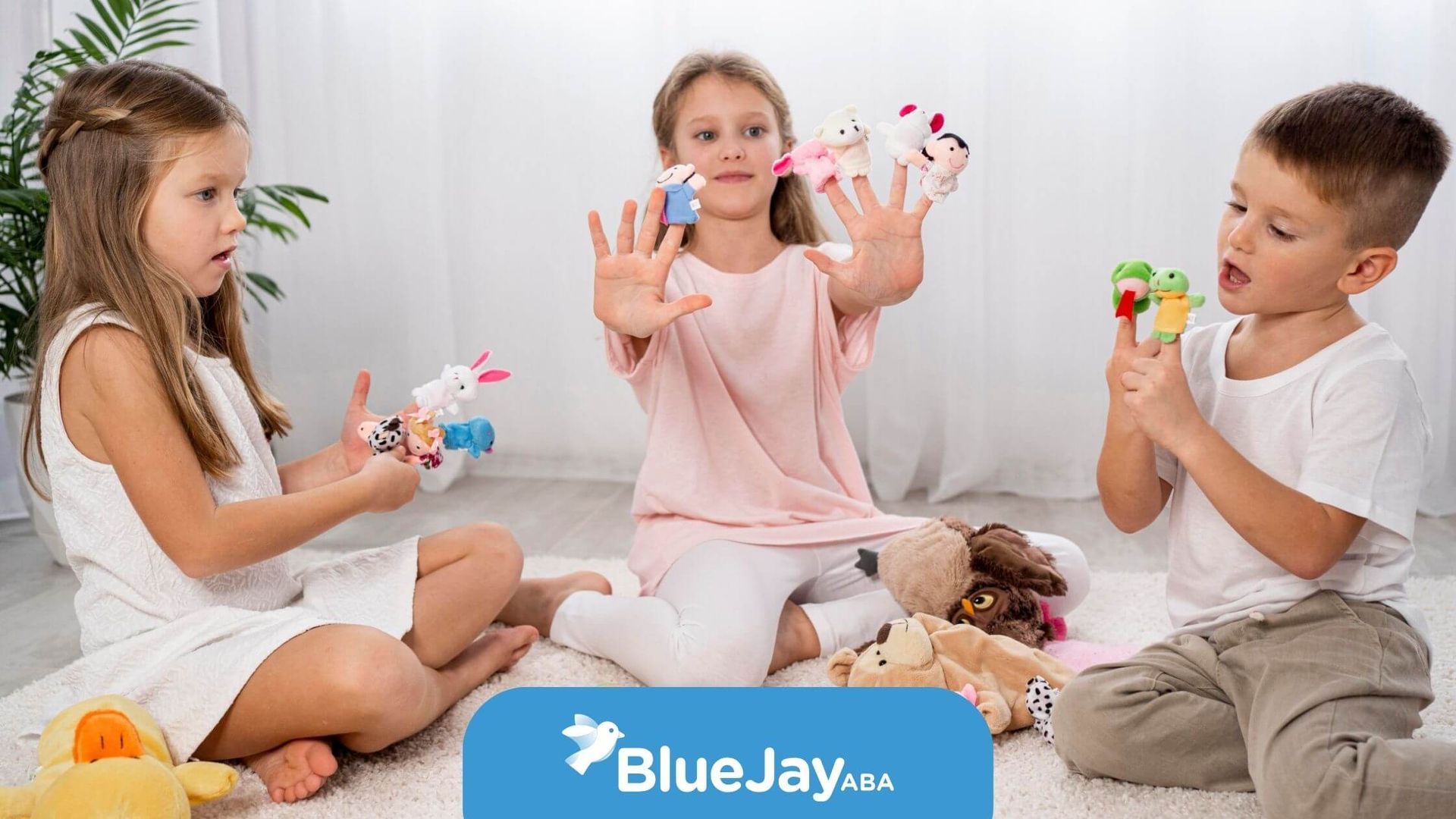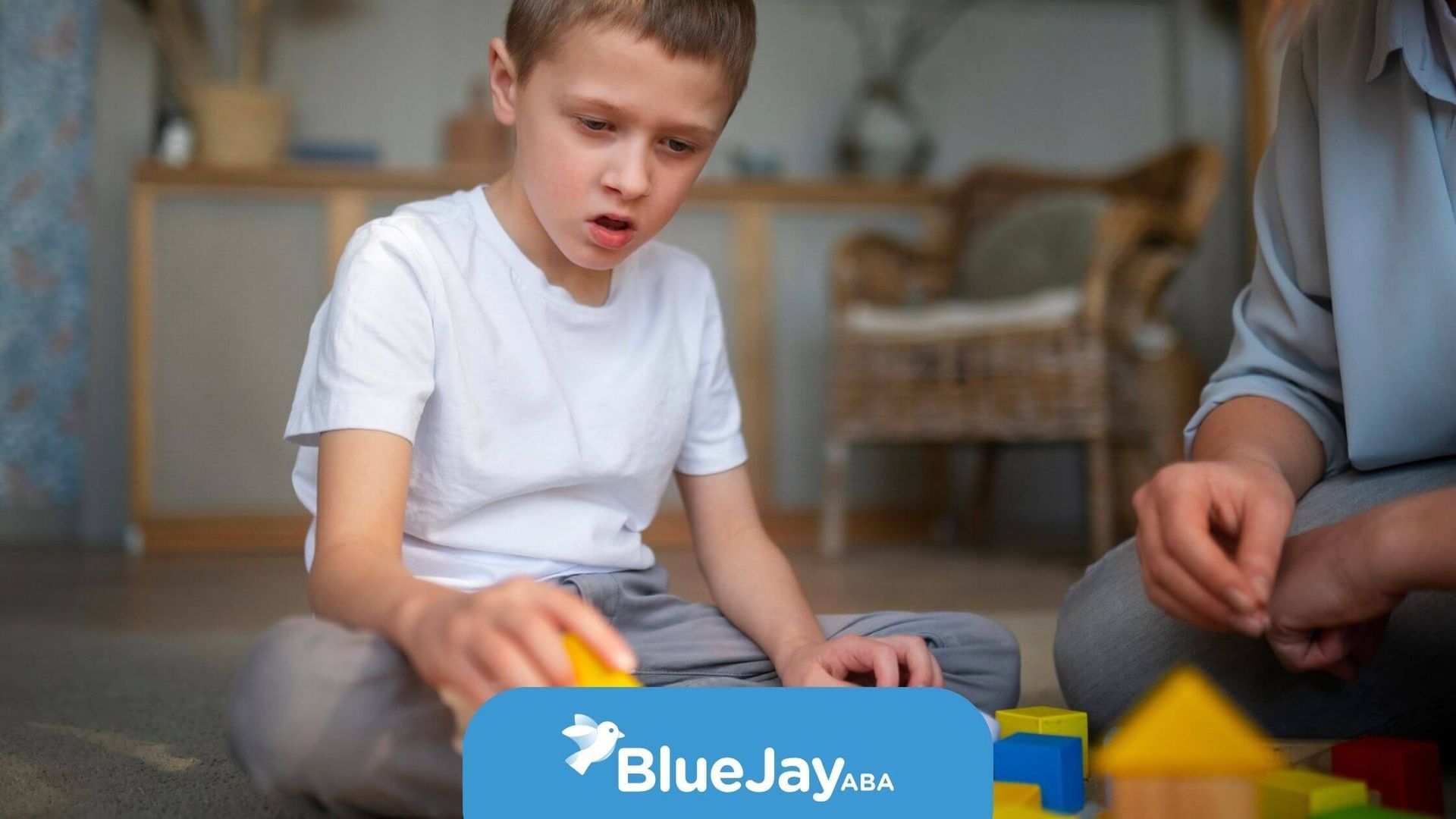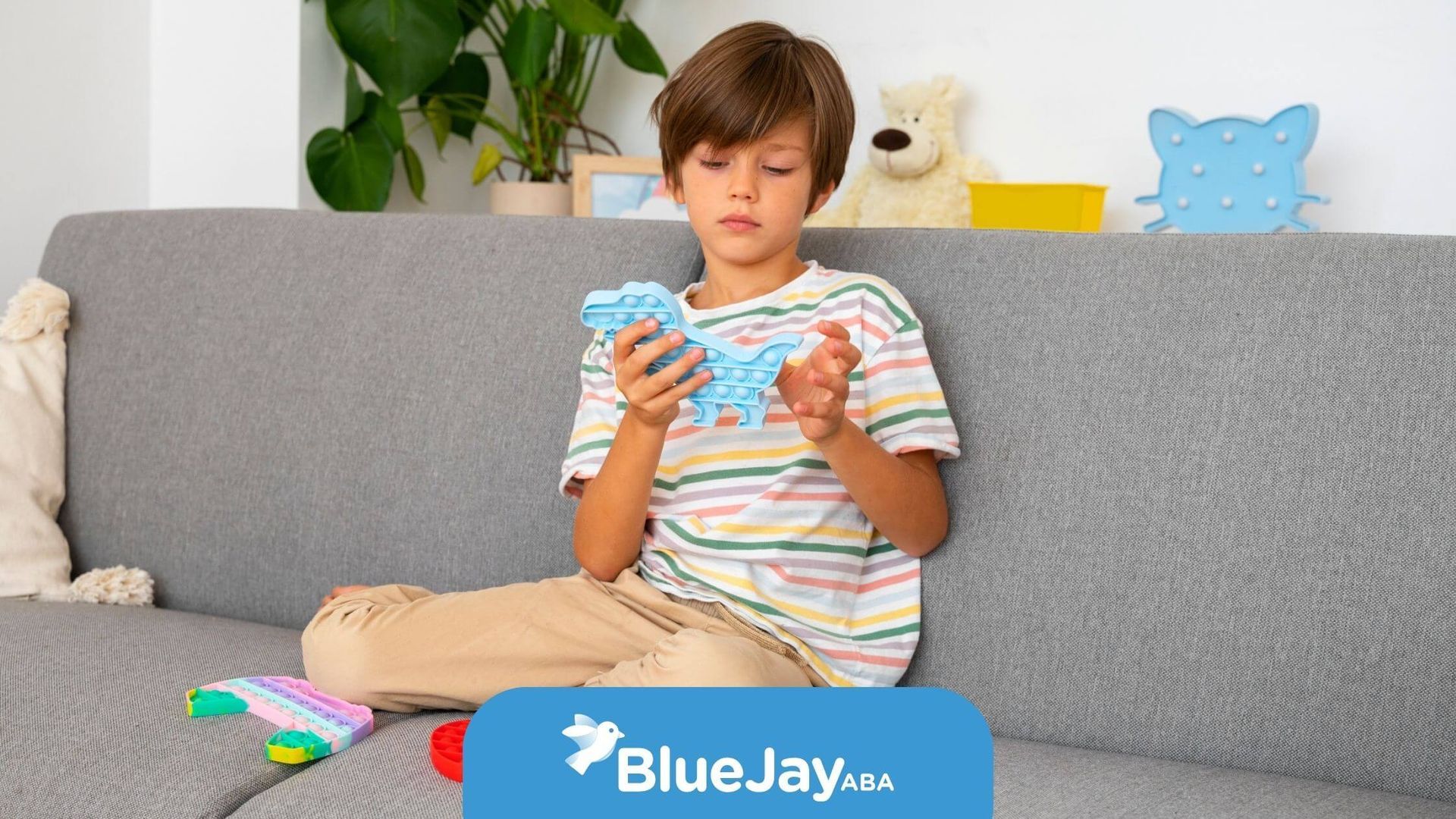The Essential Prompt Hierarchy in ABA Therapy for Autism
Key Highlights
- Prompt hierarchies are essential for teaching new skills to children with autism in ABA therapy.
- They involve a systematic approach to introducing, fading, and generalizing prompts to encourage independence.
- Various prompting techniques are used, including physical, verbal, visual, and gestural prompts.
- Each prompting strategy has its place depending on individual learner needs and skill complexity.
- Consistent data collection is crucial throughout the prompt hierarchy implementation process.
- Collaboration between ABA therapists, parents, and educators ensures consistency and successful skill acquisition for the child.
Introduction
In applied behavior analysis (ABA), many strategies help people with developmental disabilities, especially those with autism, learn new skills. One important strategy is prompting. It provides essential support for these individuals. This blog looks at the important role of prompt hierarchy in autism therapy. It shares information about different types of prompts, tips for using them effectively, and examples of how they can help in learning new skills.
Understanding the Basics of Prompt Hierarchy in ABA Therapy
Prompting is an important part of ABA therapy. It means giving extra help or hints to guide people to act in a certain way. The goal is to help them become independent. We want them to do these actions without needing outside help.
This is where the idea of a prompt hierarchy comes in. It is a system that shows how to slowly reduce the prompts as the person gets better at each level. Think of it as a helpful structure that leads people to be more self-reliant.
Defining Prompt Hierarchy and Its Role in Autism Therapy
A prompt hierarchy is like a guide for teaching a new skill. It is a simple way to give support and then slowly reduce that help as we learn. This method helps people learn skills in a good way.
We start with the most intrusive prompt. This means giving the highest level of help to ensure the learner does well. As the learner starts to understand the skill, we use less help. This promotes independence.
This approach is different for each person based on their progress. That is what makes the prompt hierarchy an effective method. Its flexibility allows us to use it for many skills, from easy actions like pointing to harder things like having conversations.
The Importance of Prompting in Skill Acquisition and Independence
In ABA, prompting means more than just getting the right answer. It helps a person gain skills and become independent. Think about a child learning to tie their shoelaces. At first, a parent may use physical prompting, like holding the child's hands, to show them how to do it.
The goal is to help the child tie their laces all by themselves. That's where prompt fading is important. As the child gets better, the parent slowly reduces their help. In the end, the child will be able to tie their shoelaces without any assistance.
This step-by-step process is very important in errorless learning. This way of teaching helps to keep mistakes and frustration low for the learner. It makes learning enjoyable and motivates children to learn new skills.
Types of Prompts in ABA Therapy
ABA therapy uses different types of prompts to match the individual needs and learning styles of each person. Each kind of prompt helps give guidance and support in its own way. The prompt types are:
- Physical prompts
- Verbal prompts
- Visual prompts
- Gestural prompts
Now, let’s explain each prompt type and how they are used.
Physical Prompts: Guiding Through Touch
Physical prompts are ways to give support or help so someone can do a particular task. This method is especially helpful when learning a new motor skill. For example, think about teaching a child to write their name.
At first, the therapist may use a hand-over-hand technique. This means gently moving the child's hand to help them write the letters correctly. This is called full physical prompting. As the child gets better, the therapist may switch to partial physical prompts.
This might include touching the child’s elbow or wrist to give softer guidance. It helps the child be more in control while still having some help. Over time, as the child gets consistent and correct, these physical prompts will slowly reduce.
Verbal Prompts: Instructions and Cues
Verbal prompts use spoken words or phrases to help the learner find the right answer. They can be easy to understand, like direct instructions, or they can be gentle hints. The clearest type is called a “direct verbal prompt.” This type gives the answer straight out.
For example, when teaching colors, you can hold up a red card and say "red." That's a direct verbal prompt. Then, we have “indirect verbal prompts.” These allow the learner to guess the answer a bit more. For instance, if you teach a child about animals, instead of saying the animal's name, you might ask, "What animal goes 'moo'?" This helps the child to use what they know. Like with other prompts, we aim to reduce verbal prompts as time goes on.
Visual Prompts: Using Images and Symbols for Communication
Visual prompts use pictures, objects, or written words to help people understand and finish tasks. This method is especially good for those who learn better with visual information, like people with communication problems.
Visual schedules are a common example of visual prompts found in special education classrooms. These schedules show the day's activities clearly. They help students know what to expect and manage their time better. Another example is using picture cards to teach new words.
When students see a picture of a "ball" next to the word, they can connect the image to the meaning. This method boosts their grasp of the word. It is especially useful for students who find it hard to understand spoken instructions or remember them.
Gestural Prompts: Signaling Without Words
Gestural prompts use gestures or body language to help a learner find the correct response. These nonverbal hints are often very effective. For example, think about teaching a child to put away their toys.
A gesture prompt could be pointing to the toy bin. This shows the child where the toys should go without using any words. If a child is learning to wash their hands, the therapist might make a hand-washing motion. This silently encourages the child to copy the action.
As the child gets used to the routine, these gesture prompts can be used less often and eventually taken away. This method is especially good for people who find it hard to understand verbal instructions. It also works well for those who communicate mainly with nonverbal cues.
Implementing Prompt Fading for Greater Independence
Prompt fading means slowly reducing how often we give prompts or how strong they are. This method helps the learner need fewer outside hints and learn to do the skill on their own. You can compare it to taking away training wheels on a bike.
When a child learns to ride a bike, they start with training wheels for help. Prompt fading works the same way in ABA. As the child gets better at balancing and becomes more confident, we take away the training wheels. This lets them ride by themselves.
Strategies for Effective Prompt Fading
Prompt fading is an important skill in ABA therapy. It uses specific methods to help the learner become independent. Here are three common methods:
- Most-to-Least Prompting: This method starts with the biggest help to ensure the learner succeeds. Then, we slowly give less help until the learner can do it alone. For example, if you are teaching a child to write the letter “A,” you may first guide their hand. As they get better, you give less support, like touching their wrist lightly or just pointing to the letter.
- Least-to-Most Prompting: Here, we start with the smallest help and only give more support if needed. If the learner does not respond to a verbal cue, we may show a visual cue or a gesture before offering physical help.
- Time Delay: This method adds a short pause between asking a question and giving help. This lets the learner try to answer on their own. For example, you could ask, “What color is this?” and wait for a few seconds before giving the answer if they need it.
Measuring Success in Prompt Reduction
To make sure any plan works, we need to track our progress. This is important for prompt fading, too. Keeping an eye on things helps us understand how well we are reducing prompts.
One way to check our success is by writing down prompt levels during each teaching session. This careful note-taking lets us see how the learner is becoming more independent. If we see a steady drop in the prompts they need, it means we are making good progress.
Another way to measure success is by looking at how well the learner can use their new skill in different places and with different people. For example, if a child learns to ask for water at the dinner table, can they do this in other places and with other people? Checking how skills transfer shows us how effective our plan has been.
Case Studies: Success Stories in ABA Prompt Hierarchy
The real-life uses of the prompt hierarchy show how effective it is in helping individuals with autism learn new skills and feel more independent. Let's look at a few success stories that highlight the success of this method.
These stories show how tailored prompting techniques can help people grow and lead to greater independence and a better life.
Overcoming Challenges with Prompt Dependency
Prompt dependence happens when someone needs help, or prompts, to do a task. This can be an issue in ABA therapy because it makes it hard for the person to use what they’ve learned in different situations. Luckily, there are strategies to reduce prompt dependence:
- Clear Criteria for Fading: Set clear rules for how and when to reduce prompts. This way, you can lessen the prompts as the learner gets better.
- Reinforcing Independence: Give rewards like praise for doing tasks by themselves. This helps create a link between the action and a positive outcome, motivating the learner to act without prompts.
- Introducing Natural Consequences: Include real-life results when suitable. For example, if a child learns to ask for a snack, let them have it only if they ask independently. This shows the importance of communication and helps with skill generalization.
Achieving Milestones Through Tailored Prompting Techniques
Each person on the autism spectrum is different. They have their own skills, challenges, and ways of learning. This is why individualized prompting is so important. Just like a tailor makes clothes that fit well, ABA therapists choose and adjust prompting methods to fit each learner.
This means thinking about how the child communicates, what they like, and their behavior. For example, a child who learns best with pictures might use visual schedules and picture cards. A child who has sensitivities might need changes to physical prompts.
By respecting each child's uniqueness and changing our methods, we make the learning process better. We help individuals reach their full potential. This personal approach makes ABA therapy special and helps it succeed.
Collaborating with Professionals and Caregivers
Effective prompt hierarchy is important not just in therapy sessions. For someone to learn well, everyone needs to work together. Parents, teachers, and ABA therapists create a team to help the learner.
When everyone shares this duty, it helps maintain consistency in different places. This teamwork boosts the learner's growth and independence.
Role of ABA Therapists in Prompt Hierarchy Implementation
ABA therapists create and manage the prompt hierarchy. They work on tasks like assessing needs, finding target behaviors, and choosing the best prompt strategies for each learner.
They carefully plan how to fade prompts and help skills transfer to real-life situations. Think of them as guides, helping the individual through the learning process.
Outside of therapy sessions, ABA therapists also train and support parents and caregivers. They give families the knowledge and tools to use prompting strategies in various settings. This builds a supportive network for the individual’s growth.
Training Parents and Educators on Effective Prompting
Empowering parents and teachers with the right knowledge and skills to use prompting strategies is very important for building consistency. ABA therapists are essential in giving this training. They teach parents and teachers about different types of prompts and how to use them, just like a coach helps athletes improve.
This training helps caregivers give proper prompts during daily activities, such as getting dressed, eating, or having fun. It goes beyond just giving instructions. Therapists also teach how to slowly reduce prompts, so children can learn to do things on their own.
This teamwork between therapy sessions and daily life helps support the child's growth and development.
Conclusion
Prompt hierarchy is very important in ABA therapy for people with autism. It helps them learn new skills and become more independent. They get help through physical, verbal, visual, and gestural prompts. These prompts guide them so they can reach their goals. Using prompt fading strategies helps them to be more self-reliant. Many success stories show the good results of using custom prompting methods. Working together with professionals and caregivers provides a complete plan for using prompt hierarchy. By avoiding mistakes and tracking their progress well, individuals can move toward independence. Knowing prompt hierarchy is essential to help people with autism improve their skills and gain more freedom.
Frequently Asked Questions
What is the best starting point for introducing prompts in ABA therapy?
Before using response prompts, it’s important to check the person’s current skill level in a variety of tasks. This allows you to find their starting point. Then, you can slowly introduce response prompts. Start with the least intrusive option and offer more support as necessary.
How do I know when to fade a prompt in ABA therapy?
When a learner gives correct answers with few mistakes, it's time to fade prompts. Pay attention to the learner's signals and slowly lessen how much help you give. This could mean changing from physical help to just using words. Talking to ABA professionals can guide you in setting up a good plan for fading.
Can prompts be used for teaching all types of skills?
Prompts are very useful because they can teach many skills. They help with communication, social skills, schoolwork, and self-care. Different types of prompts can support learning, especially when we use them in a way that avoids mistakes. This method is called errorless learning.
What are some common mistakes to avoid in prompt hierarchy?
- Some common mistakes to avoid in prompt hierarchy are using too many prompts, not fading prompts in a smart way, and not focusing on prompts that fit each child.
- It is important to customize prompts to match the child's needs and skills to make ABA therapy work well.
How can I track progress with prompt hierarchies in ABA therapy?
Consistent data collection is important for tracking progress. Keep checking and noting how much help is needed. Look at this data often to make smart choices. For more insights, check out publications like the Journal of Applied Behavior Analysis. This journal often shares studies about effective prompting strategies for people with developmental disabilities.
SOURCES:
https://howtoaba.com/the-prompt-hierarchy/
https://autismclassroomresources.com/5-main-types-of-prompts-infographic/
https://asdtoddler.fpg.unc.edu/prompting-module/overview-prompting/what-prompting/types-prompts.html
https://digitability.com/five-types-prompting-informal-assessment/
https://raisingchildren.net.au/autism/therapies-guide/visual-supports
Related Posts






